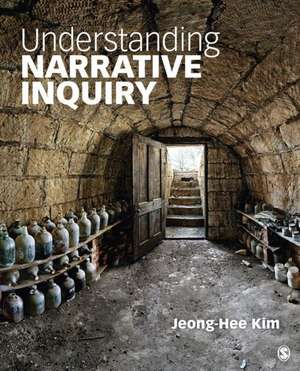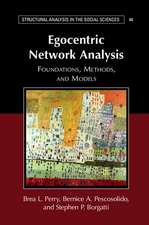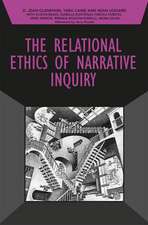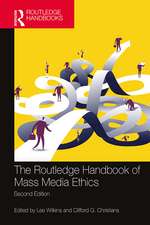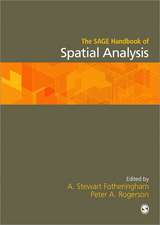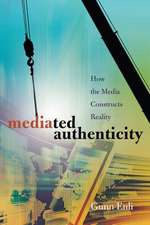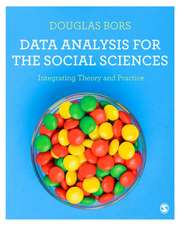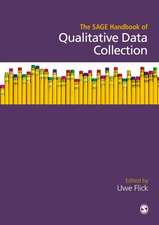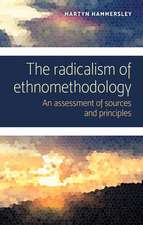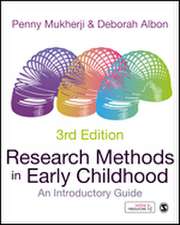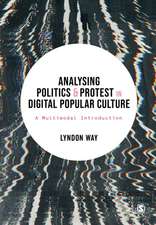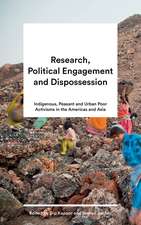Understanding Narrative Inquiry: The Crafting and Analysis of Stories as Research
Autor Jeong-Hee Kimen Limba Engleză Paperback – 18 mai 2015
Preț: 519.18 lei
Preț vechi: 701.60 lei
-26% Nou
Puncte Express: 779
Preț estimativ în valută:
99.34€ • 103.72$ • 82.22£
99.34€ • 103.72$ • 82.22£
Carte disponibilă
Livrare economică 14-28 martie
Livrare express 27 februarie-05 martie pentru 33.93 lei
Preluare comenzi: 021 569.72.76
Specificații
ISBN-13: 9781452282787
ISBN-10: 1452282781
Pagini: 368
Ilustrații: illustrations
Dimensiuni: 187 x 232 x 22 mm
Greutate: 0.62 kg
Ediția:1
Editura: SAGE Publications
Colecția Sage Publications, Inc
Locul publicării:Thousand Oaks, United States
ISBN-10: 1452282781
Pagini: 368
Ilustrații: illustrations
Dimensiuni: 187 x 232 x 22 mm
Greutate: 0.62 kg
Ediția:1
Editura: SAGE Publications
Colecția Sage Publications, Inc
Locul publicării:Thousand Oaks, United States
Recenzii
This is a thorough and inclusive book that can serve as an excellent introduction to narrative forms of qualitative research in the fields of education, medicine, psychology, and legal studies. But Understanding Narrative Inquiry may also serve to extend the knowledge of researchers and practitioners in those fields who are already familiar with this rapidly maturing inquiry approach. Extremely well researched and referenced, it deftly addresses sophisticated theoretical and philosophical underpinnings of narrative research, including the rationales and justifications for engaging in both storytelling and the analysis of stories. And it also explores a wide variety of helpful strategies for interviewing, fieldwork, and writing. But just as importantly, it grounds and humanizes its sophisticated scholarship through an inviting, conversational style replete with personal anecdotes, while its many concrete examples of research practice in action further enhances its usefulness. A remarkable achievement.
This is an outstanding text on narrative inquiry. Kim offers the historical and philosophical context for narrative research, ample methodological instruction, and robust examples, making this a truly comprehensive text. I am particularly impressed with her attention to the different genres of narrative including arts-based and visual-based. This is a must-read for anyone interested in narrative research.
Jeong-Hee Kim masterfully positions readers to enter the storied fabric of human life through the medium of narrative inquiry. Readers across all disciplines and interests will find themselves locating and articulating the textured significances of stories as research. Philosophical/theoretical connections substantively frame and permeate the text with readers importantly gaining context, language, and capacities to design and undertake fitting narrative inquiries. The concrete examples depicting a cross section of genres and the inclusion of a glossary make this comprehensive text an invaluable resource for all interested in crafting and analysis of research through narrative inquiry.
This text offers novice and practicing scholars of narrative inquiry provocative philosophical and methodological insights. The text is beautifully written and draws on art, music, religion, philosophy, and literature to inform researchers’ understandings.
The author’s use of a conversational tone—as if she is talking directly to her students—while guiding the reader through complex theoretical material is noteworthy, as are the expertly designed “Questions for Reflection” and the “Activities” sections at the end of each chapter. This text will be of interest to anyone teaching Qualitative Research Methods looking for ways to engage their graduate students.
This is an outstanding text on narrative inquiry. Kim offers the historical and philosophical context for narrative research, ample methodological instruction, and robust examples, making this a truly comprehensive text. I am particularly impressed with her attention to the different genres of narrative including arts-based and visual-based. This is a must-read for anyone interested in narrative research.
Jeong-Hee Kim masterfully positions readers to enter the storied fabric of human life through the medium of narrative inquiry. Readers across all disciplines and interests will find themselves locating and articulating the textured significances of stories as research. Philosophical/theoretical connections substantively frame and permeate the text with readers importantly gaining context, language, and capacities to design and undertake fitting narrative inquiries. The concrete examples depicting a cross section of genres and the inclusion of a glossary make this comprehensive text an invaluable resource for all interested in crafting and analysis of research through narrative inquiry.
This text offers novice and practicing scholars of narrative inquiry provocative philosophical and methodological insights. The text is beautifully written and draws on art, music, religion, philosophy, and literature to inform researchers’ understandings.
The author’s use of a conversational tone—as if she is talking directly to her students—while guiding the reader through complex theoretical material is noteworthy, as are the expertly designed “Questions for Reflection” and the “Activities” sections at the end of each chapter. This text will be of interest to anyone teaching Qualitative Research Methods looking for ways to engage their graduate students.
Cuprins
1. Locating Narrative Inquiry in the Interdisciplinary Context
Scientific Research and Qualitative Research in Tandem
Narrative Inquiry
Narrative Inquiry in Different Disciplines
Some Cautionary Tales About Narrative Inquiry
Narrative Inquiry as the Synergy of Interdisciplinarity
Learning to be a Storyteller in the Interdisciplinary Context
Conclusion: A Falling Apple
2. Philosophical/Theoretical Underpinnings of Narrative Inquiry
The Role of Theory
Philosophical/Theoretical/Interpretive Paradigm
Theory and Narrative Inquiry
Critical Theory
Critical Race Theory
Feminist Theory
Phenomenology
Poststructuralism/Postmodernism/Deconstruction
Dewey's Theory of Experience
Bakhtin's Theory of Novelness
Conclusion: No Theory Used as a Procrustean Bed
3. Narrative Research Design: Engaging in Aesthetic Play
Engaging in Aesthetic Play
Standards for Humanities-Oriented Research
Learning to Think Narratively
Plowing Before Sowing: On Reviewing the Literature
Developing "Good" Research Questions
Imagining the Researcher-Participant Relationship: From "Spy" to "Friend"
Ethical Issues in Narrative Inquiry
Qualitative Writing vs. Scientific Writing
Imagining Narrative Writing as Aesthetic Play
Conclusion: Where Your Heart Belongs
4. Narrative Research Genres: Meditating Stories Into Being
Narrative Inquirer as a Midwife
Narrative Research Genres
Autobiographical Narrative Inquiry
Biographical Narrative Inquiry
Arts-Based Narrative Inquiry
Literary-Based Narrative Inquiry
Visual-Based Narrative Inquiry
Conclusion: Blurring Genres
5. Narrative Data Collection Methods: Excavating Stories
Narrative Thinking
Interview Logistics
Types of Qualitative Interview
Narrative Interviewing
Fieldwork
Artifacts: Cabinets of Curiosities or Cabinets of Wonder
Visual Data
Digital Archival Data
Conclusion: Excavating Stories as Data
6. Narrative Data Analysis and Interpretation: "Flirting" With Data
On Flirtation
Qualitative Data Analysis
Theorizing Narrative Data Analysis and Interpretation
Methods of Narrative Data Analysis
Narrative Analysis in Narrative Genres
Conclusion: Variegations of Narrative Analysis and Interpretation
7. Narrative Coda: Theorizing Narrative Meaning
On Coda
Researching Signature
Answering the Question "So What?"
Desiring and Audience
Avoiding an Epic Closure
Theorizing Findings
Planting the Seed for Social Justice
Becoming a Scheherazade
Conclusion: Ongoing Stories
8. Critical Issues in Narrative Inquiry: Looking Into a Kaleidoscope
Looking into a Kaleidoscope
Contradicting Stories: The Rashomon Effect
Temptation of Backyard Research
On Reflexivity
On Bricolage and Bricoleur
On "Small" Stories
Storytelling as Performance
Conclusion: Pushing the Boundary of Narrative Inquiry
9. Examples of Narrative Inquiry: Theory Into Practice
Narrative Inquiry as Phenomenon and Method
Narrative Inquiry as Oral History
Narrative Inquiry as Life Story
Narrative Inquiry as Autoethnography
Narrative Inquiry as Creative Fiction
Narrative Inquiry as Fiction
Conclusion: Learning to be a Storyteller
10. Epilogue
Scientific Research and Qualitative Research in Tandem
Narrative Inquiry
Narrative Inquiry in Different Disciplines
Some Cautionary Tales About Narrative Inquiry
Narrative Inquiry as the Synergy of Interdisciplinarity
Learning to be a Storyteller in the Interdisciplinary Context
Conclusion: A Falling Apple
2. Philosophical/Theoretical Underpinnings of Narrative Inquiry
The Role of Theory
Philosophical/Theoretical/Interpretive Paradigm
Theory and Narrative Inquiry
Critical Theory
Critical Race Theory
Feminist Theory
Phenomenology
Poststructuralism/Postmodernism/Deconstruction
Dewey's Theory of Experience
Bakhtin's Theory of Novelness
Conclusion: No Theory Used as a Procrustean Bed
3. Narrative Research Design: Engaging in Aesthetic Play
Engaging in Aesthetic Play
Standards for Humanities-Oriented Research
Learning to Think Narratively
Plowing Before Sowing: On Reviewing the Literature
Developing "Good" Research Questions
Imagining the Researcher-Participant Relationship: From "Spy" to "Friend"
Ethical Issues in Narrative Inquiry
Qualitative Writing vs. Scientific Writing
Imagining Narrative Writing as Aesthetic Play
Conclusion: Where Your Heart Belongs
4. Narrative Research Genres: Meditating Stories Into Being
Narrative Inquirer as a Midwife
Narrative Research Genres
Autobiographical Narrative Inquiry
Biographical Narrative Inquiry
Arts-Based Narrative Inquiry
Literary-Based Narrative Inquiry
Visual-Based Narrative Inquiry
Conclusion: Blurring Genres
5. Narrative Data Collection Methods: Excavating Stories
Narrative Thinking
Interview Logistics
Types of Qualitative Interview
Narrative Interviewing
Fieldwork
Artifacts: Cabinets of Curiosities or Cabinets of Wonder
Visual Data
Digital Archival Data
Conclusion: Excavating Stories as Data
6. Narrative Data Analysis and Interpretation: "Flirting" With Data
On Flirtation
Qualitative Data Analysis
Theorizing Narrative Data Analysis and Interpretation
Methods of Narrative Data Analysis
Narrative Analysis in Narrative Genres
Conclusion: Variegations of Narrative Analysis and Interpretation
7. Narrative Coda: Theorizing Narrative Meaning
On Coda
Researching Signature
Answering the Question "So What?"
Desiring and Audience
Avoiding an Epic Closure
Theorizing Findings
Planting the Seed for Social Justice
Becoming a Scheherazade
Conclusion: Ongoing Stories
8. Critical Issues in Narrative Inquiry: Looking Into a Kaleidoscope
Looking into a Kaleidoscope
Contradicting Stories: The Rashomon Effect
Temptation of Backyard Research
On Reflexivity
On Bricolage and Bricoleur
On "Small" Stories
Storytelling as Performance
Conclusion: Pushing the Boundary of Narrative Inquiry
9. Examples of Narrative Inquiry: Theory Into Practice
Narrative Inquiry as Phenomenon and Method
Narrative Inquiry as Oral History
Narrative Inquiry as Life Story
Narrative Inquiry as Autoethnography
Narrative Inquiry as Creative Fiction
Narrative Inquiry as Fiction
Conclusion: Learning to be a Storyteller
10. Epilogue
Notă biografică
Descriere
Rich in stories from the author's own research, and examples of graduate students' research dilemmas, this book is a both theoretical and practical guide to all aspects of narrative inquiry.
